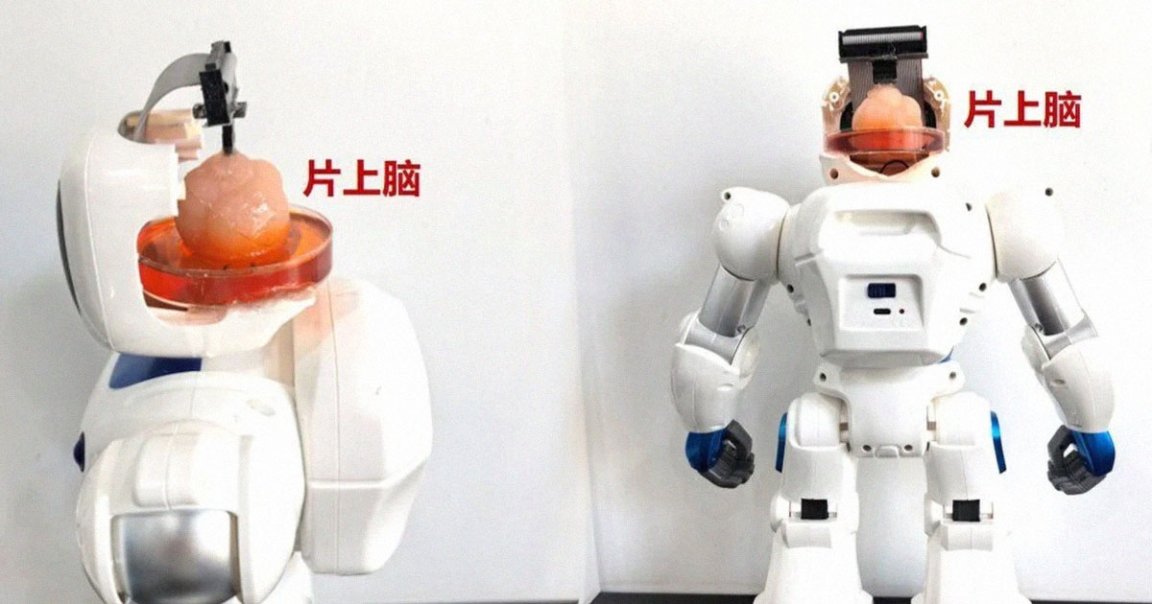
A team of Chinese researchers has stuck a tiny organoid made from human stem cells into the body of a tiny robot, resulting in a Frankensteinian creation that can learn how to complete certain tasks.
As the South China Morning Post reports, the researchers from Tianjin University and the Southern University of Science and Technology hooked the brain tissue to a neural interface, allowing it to pass on instructions to the humanoid robot body.
The goal is to study brain-computer interfaces that can act as a mediator between electrical signals in the brain and computing power.
According to a statement by the researchers, the brainy robot is the “world’s first open-source brain-on-chip intelligent complex information interaction system.”

The eyebrow-raising picture provided by the researchers, however, is a little misleading. As New Atlas points out, the pink blobs of what appear to be brain matter are simply mockups or “demonstration diagrams of future application scenarios” and are likely much smaller in real life.
The researchers’ organoids were formed from human pluripotent stem cells, which have the capacity to divide and develop into different kinds of cells, such as brain tissues.
Beyond teaching a small humanoid robot to avoid obstacles or grip objects, scientists hope that organoids could eventually be used to repair the human brain through transplantation. For instance, scientists have previously suggested such transplants could help patients who have suffered a stroke.
“The transplant of human brain organoids into living brains is a novel method for advancing organoid development and function,” the latest paper reads, as quoted by the SCMP. “Organoid grafts have a host-derived functional vasculature system and exhibit advanced maturation.”
However, the research is still in its infancy and many questions remain. It’s unclear, for instance, if damaged brain tissues could ever be repaired or reconstructed using organoids.
But researchers are nonetheless intrigued. Last year, researchers at the University of Pennsylvania inserted human neurons into the brains of rats with damaged visual cortices, leading some of the affected areas to spring back to life and respond to external stimuli such as light.
In their latest paper, the Chinese researchers treated the organoids with low-intensity ultrasound to find new ways to integrate them into the human brain. They found that the ultrasound supported the formation of networks within the host, a potentially non-invasive method to help patients suffering from brain damage.
For now, the ultrasound could help bridge the gap between organoids and a computing interface — a small step towards a future where lab-grown brain tissue could help restore functions in the human brain.
And with all apologies to the researchers, best of luck avoiding comparisons to “RoboCop 2”:

More on organoids: Scientists Grow Teeny Tiny Testicles in Laboratory